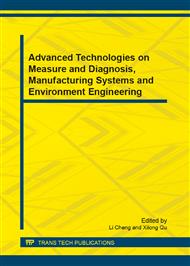[1]
Feng L, Noise and Vibration of a fliud filled elastic pipe coated with an absorptive layer on the inner side of the wall [J].Sound&Vib. 1995 183(1):169-178.
DOI: 10.1006/jsvi.1995.0246
Google Scholar
[2]
Kallstrom C.G. Identification and adaptive control applied to ship steering.Publication N0.93 of SSPA.Sweden,(1982)
Google Scholar
[3]
Sperry E.Directional stability of automatically steered bodies.Journal of the American Society of Naval Engineers,(1922)
DOI: 10.1111/j.1559-3584.1922.tb04958.x
Google Scholar
[4]
V. A. Svetlitsky. Vibration of Tubes Conveying Fluids. Journal of the Acoustical Society of America. 1977,Vo1.62: 595-600
DOI: 10.1121/1.381560
Google Scholar
[5]
R. W. Doll, C. D. Mote. The Dynamic Formulation and the Finite Element Analysis of Curved and Twisted Tubes Transporting Fluids. Report to the National Sciences
Google Scholar
[6]
Foundation. 1974, Dept. of Mechanical Engineering, University of California, Berkeley, U.S.A.
Google Scholar
[7]
H. S. Liu, C. D. Mote. Dynamics of Response of Pipes Transporting Fluids. ASME Journal of Engineering for Industry. 1974, Vo1.96: 591-596
DOI: 10.1115/1.3438369
Google Scholar
[8]
Nunjal M L. Acoustic analysis and parametric studies of lagged pipes.Noise Control Eng. J. 1997, 45(3):113-118.
DOI: 10.3397/1.2828432
Google Scholar
[9]
Fang J Lyons G J. Structural damping of tensioned pipes with reference to cables. J. Sound&Vib. 1996, 193 (4):891-907
DOI: 10.1006/jsvi.1996.0321
Google Scholar
[10]
G R. Cowper. The Shear Coefficient in Timoshenko's Beam Theory. ASME Journal of Applied Mechanics. 1966,33:335-340
Google Scholar
[11]
S. S. Chen. Vibration and Stability of a Uniformly Curved Tube Conveying Fluid. Journal of the Acoustical Society of America. 1972, Vo1.51:223-232
DOI: 10.1121/1.1912834
Google Scholar
[12]
S. S. Chen. Flow-induced In-plane Instabilities of Curved Pipes. Nuclear Engineering and Design. 1972,Vo1.23:29-3 8
DOI: 10.1016/0029-5493(72)90189-6
Google Scholar
[13]
S. S. Chen. Out-of-plane Vibration and Stability of Curved T}.ibes Conveying Fluid Journal of Applied Mechanics. 1973,Vo1.40: 362-368
DOI: 10.1115/1.3422988
Google Scholar


